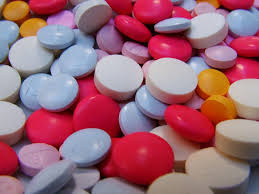Symptom Finder - Proteinuria
PROTEINURIA
There are many causes of proteinuria. The mnemonic VINDICATE is a helpful way of developing a list of possibilities.
V—Vascular category should call to mind CHF, hypertension, and renal vein thrombosis.
I—Inflammation: An important cause of proteinuria is UTI. In addition to the common bacterial infection, one should not forget tuberculosis, schistosomiasis, viral hepatitis, syphilis, and malaria.
N—Neoplasm category includes Wilms tumor, renal cell carcinoma, papilloma of the renal pelvis and bladder, and multiple myeloma.
D—Degenerative disorders are not a common cause of proteinuria.
I—Intoxication category includes toxic reactions to gold, mercury, gentamicin, penicillamine, captopril, and anticonvulsants. There are many other drugs that cause proteinuria. Idiopathic prompts the recall of orthostatic proteinuria. Also remember primary amyloidosis.
C—Congenital causes should bring to mind polycystic kidneys, Alport syndrome, Fabry disease, horseshoe kidney, and other congenital anomalies.
A—Allergic and autoimmune should call to mind acute glomerulonephritis, collagen diseases, Wegener granulomatosis, Henoch–Schönlein purpura, amyloidosis, sarcoidosis, and chronic interstitial nephritis.
T—Trauma: The kidneys are involved in various forms of trauma causing proteinuria, but usually there is associated hematuria. Stones should also be included in this category because they cause trauma, inducing proteinuria and hematuria.
E—Endocrine disorders include diabetic nephrosis, myxedema, and Graves disease.
Approach to the Diagnosis
The first step is to determine whether the proteinuria is caused by infection. A urinalysis for WBCs and examination of a fresh drop of unspun urine under the microscope for the bacteria are the fastest ways of determining this. The urine can also be cultured. Next, determine if there are red cells in the urine. This would indicate a more serious cause for the proteinuria such as collagen disease, stone, glomerulonephritis, or neoplasm, and prompts the need for an IVP, cystoscopy, and urology consult.
Other Useful Tests
1. CBC (pyelonephritis, infectious disease)
2. Sedimentation rate (infectious disease)
3. 24-hour urine protein (nephrosis)
4. Chemistry panel (uremia, liver disease)
5. Urine for Bence–Jones protein (multiple myeloma)
6. Serum protein electrophoresis (multiple myeloma, collagen
disease)
7. ANA analysis (collagen disease)
8. Addis count (glomerulonephritis)
9. ASO titer (acute glomerulonephritis)
10. CT scan of the abdomen and pelvis (neoplasm, malformation)
11. Retrograde pyelography (neoplasm, hydronephrosis)
12. Nephrology consult
13. Renal biopsy (glomerulonephritis)
14. Renal angiogram (renal artery stenosis, renal vein thrombosis)
There are many causes of proteinuria. The mnemonic VINDICATE is a helpful way of developing a list of possibilities.
V—Vascular category should call to mind CHF, hypertension, and renal vein thrombosis.
I—Inflammation: An important cause of proteinuria is UTI. In addition to the common bacterial infection, one should not forget tuberculosis, schistosomiasis, viral hepatitis, syphilis, and malaria.
N—Neoplasm category includes Wilms tumor, renal cell carcinoma, papilloma of the renal pelvis and bladder, and multiple myeloma.
D—Degenerative disorders are not a common cause of proteinuria.
I—Intoxication category includes toxic reactions to gold, mercury, gentamicin, penicillamine, captopril, and anticonvulsants. There are many other drugs that cause proteinuria. Idiopathic prompts the recall of orthostatic proteinuria. Also remember primary amyloidosis.
C—Congenital causes should bring to mind polycystic kidneys, Alport syndrome, Fabry disease, horseshoe kidney, and other congenital anomalies.
A—Allergic and autoimmune should call to mind acute glomerulonephritis, collagen diseases, Wegener granulomatosis, Henoch–Schönlein purpura, amyloidosis, sarcoidosis, and chronic interstitial nephritis.
T—Trauma: The kidneys are involved in various forms of trauma causing proteinuria, but usually there is associated hematuria. Stones should also be included in this category because they cause trauma, inducing proteinuria and hematuria.
E—Endocrine disorders include diabetic nephrosis, myxedema, and Graves disease.
Approach to the Diagnosis
The first step is to determine whether the proteinuria is caused by infection. A urinalysis for WBCs and examination of a fresh drop of unspun urine under the microscope for the bacteria are the fastest ways of determining this. The urine can also be cultured. Next, determine if there are red cells in the urine. This would indicate a more serious cause for the proteinuria such as collagen disease, stone, glomerulonephritis, or neoplasm, and prompts the need for an IVP, cystoscopy, and urology consult.
Other Useful Tests
1. CBC (pyelonephritis, infectious disease)
2. Sedimentation rate (infectious disease)
3. 24-hour urine protein (nephrosis)
4. Chemistry panel (uremia, liver disease)
5. Urine for Bence–Jones protein (multiple myeloma)
6. Serum protein electrophoresis (multiple myeloma, collagen
disease)
7. ANA analysis (collagen disease)
8. Addis count (glomerulonephritis)
9. ASO titer (acute glomerulonephritis)
10. CT scan of the abdomen and pelvis (neoplasm, malformation)
11. Retrograde pyelography (neoplasm, hydronephrosis)
12. Nephrology consult
13. Renal biopsy (glomerulonephritis)
14. Renal angiogram (renal artery stenosis, renal vein thrombosis)

